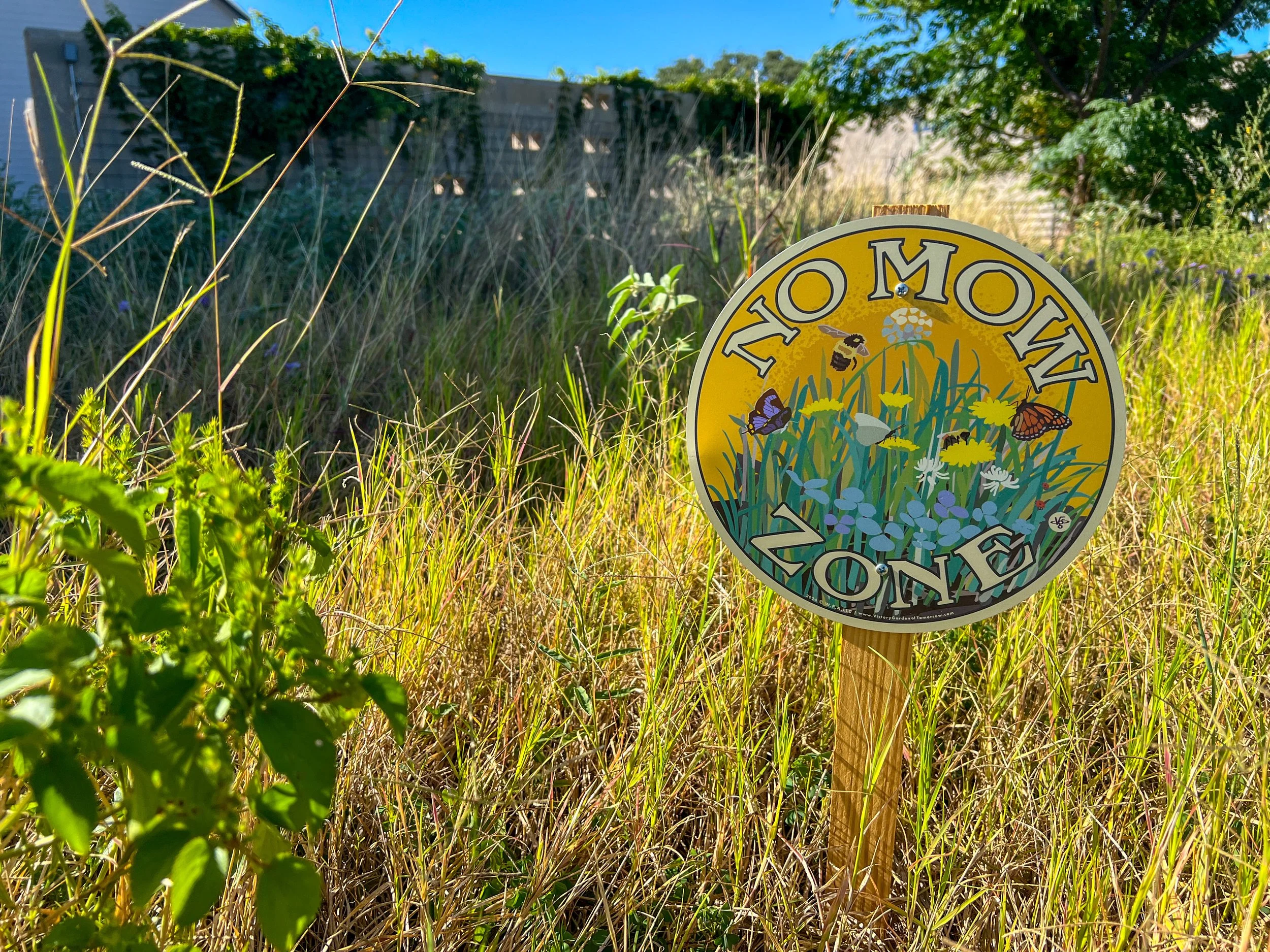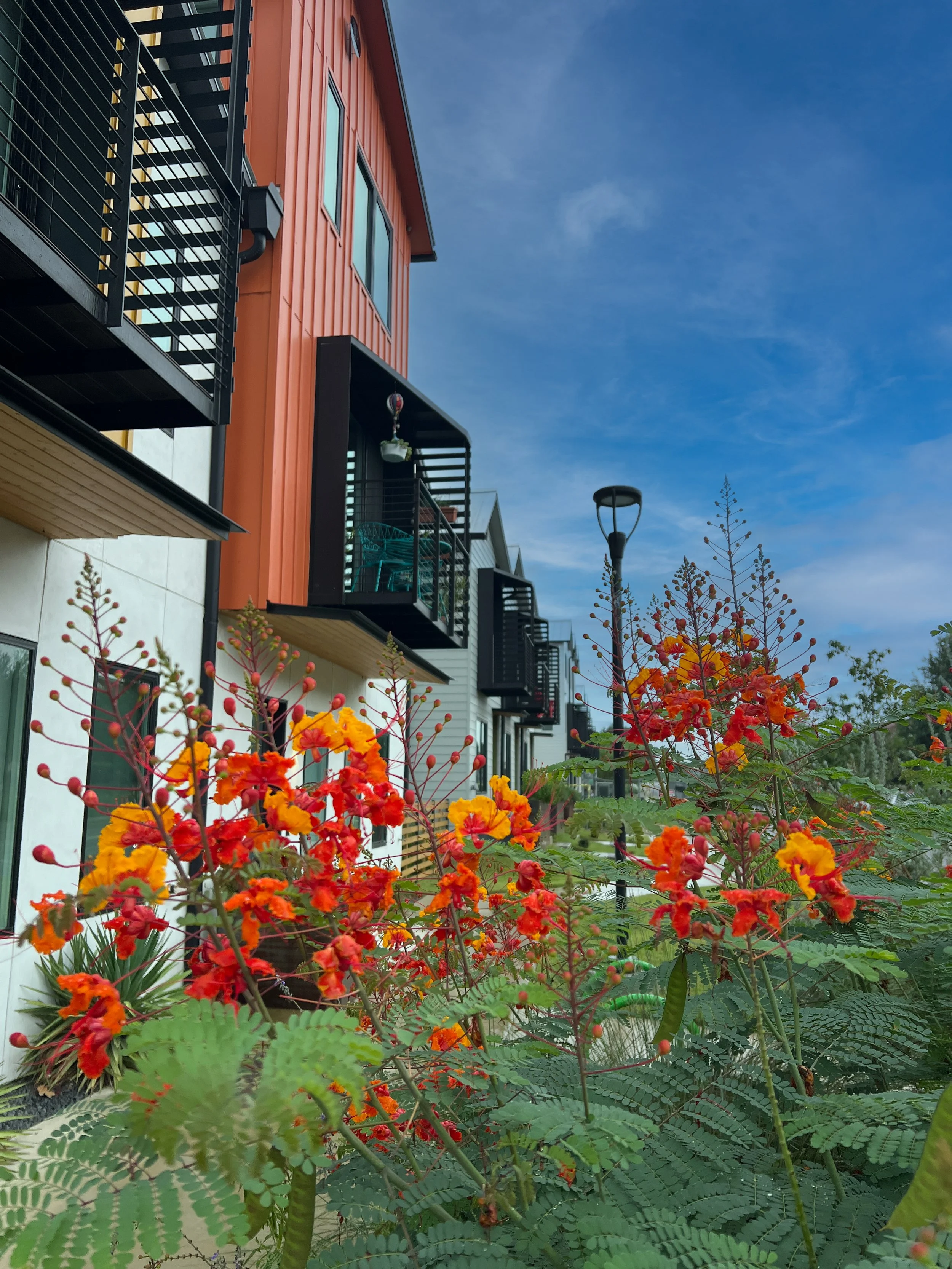Cultivating Native & Adapted Landscape in the Neighborhood
At Lively Lane, the common landscape areas are vital spaces that help to enliven and stitch the neighborhood together. Collectively, the landscape adds seasonal interest, creates shade from the Texas sun, and attracts interesting wildlife like birds and pollinators to home gardens - so stewarding it for the long-term with native and adapted plants is an important part of the neighborhood ethos.
The Native & Adapted Landscaping Approach
Native landscaping is a selective approach that focuses on plants that are naturally occurring within a region or naturally adapted to the local climate and soil. Choosing native and adapted plants may seem like an obvious choice to some today but just a few decades ago, this was a novel idea given the worldly history of borrowing and cultivating plants from afar.
Species that are endemic or naturally well-suited to a region have a much better chance of getting established once planted. They ultimately require less water, extraneous fertilizers, care to survive, and are naturally more resistant to pests and disease, which minimizes the need for chemicals. For all these reasons, native and adapted plants have a much higher chance of thriving into old age. This benefits not only the homeowners paying for the water and landscaping bill, but also the greater environment beyond.
Native & Adapted Landscape at Lively Lane
Native and adapted drought-tolerant plants are thoughtfully integrated throughout the Lively Lane neighborhood, reducing common irrigation load and expenses while enhancing the local ecosystem. A drought-tolerant turf grass in private and common yard areas creates areas to lounge and play but is supplemented by zones of diverse flowering plantings that help to support local wildlife —including butterflies, bees, birds, lizards, and other small fauna that also call the area home. A no-mow zone and experimental pollinator garden have organically sprung up in the neighborhood in recent months to allow volunteer plants to take root. Lively Lane, in it’s own small way, contributes to area biodiversity and hopefully serves as an inviting spot for those looking for a home to land.
Lively Lane Wilds
To see what all is growing and living at Lively Lane, check out the Lively Lane Wilds project on iNaturalist.
A No Mow buffer zone allows volunteer plants to take root at Lively Lane
“My hope for what lies ahead in the field of landscape design...isn’t a revolution against the use of non-natives, but a resolution to educate ourselves about what has worked for Mother Nature through the ebb and flow of time and to put that knowledge to work in the planned landscapes that are everywhere a part of our lives.”
Neighbor-Friendly Landscape Maintenance
As an extension of both its appreciation of fellow neighbors as well as native flora and fauna, quiet electric equipment and non-toxic practices are utilized for all common landscape maintenance, minimizing nuisance noise and prioritizing everyone’s health. This holistic approach aligns with Lively Lane’s commitment to fostering a healthy, eco-friendly community in the heart of San Marcos.
Pride of Barbados along Dutton Drive
Texas Spiny Lizard sunbathing in the rear gardens at Lively Lane
Carpenter Bee snacking on Orange Esperanza in the common yard
White-striped Longtail resting on a Salvia along Lively Lane





